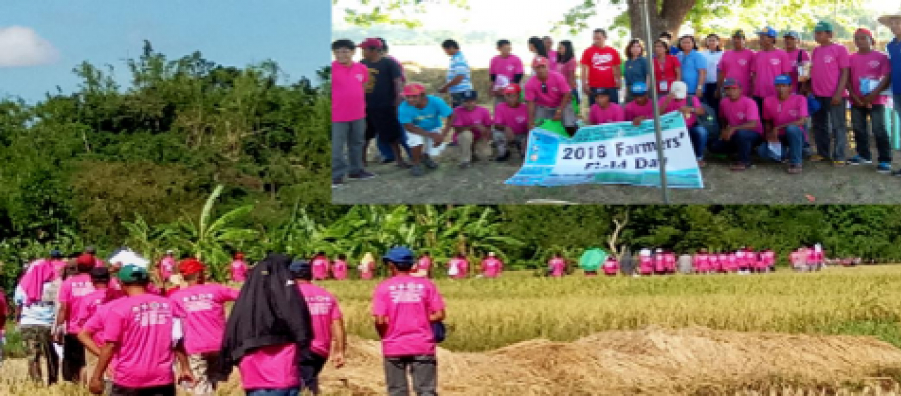
180 farmers learn new rice techno
One hundred eighty farmers and other stakeholders in Ilocos Norte attended the field day in Brgy. Cabisucolan in Vintar last October 22 to learn the different Science and Technology (S&T) interventions in rice production that might increase their rice harvest in the next cropping season.
Some 7.5 hectares of rice farm were used to showcase the latest technology with the theme, Sustaining Crop Productivity in Climate Vulnerable Areas in Ilocos Norte through S&T Community Based Farm (STCBF) on Climate Resilient Technologies.
The activity was sponsored by the DOST-PCAARRD; Ilocos Agriculture, Aquatic and Resources Research and Development Consortium (ILAARRDEC), Provincial Government of Ilocos Norte, local government units of the province, and the Philippine Rice Research and Development Institute (PhilRice) in cooperation with the Zanjera Marabanos Farmers Association of Vintar.
The Zanjera members are already adopting the use of climate-resilient technologies such as the use of organic fertilizer, Bio-N as seed inoculant, and Carrageenan Plant Growth Regulator (CPGR) as foliar fertilizer, along with improved rice production practices.
Bio-N is a microbial-based fertilizer that converts nitrogen gas into available form to sustain the nitrogen requirement of host plants. It enhances shoot growth and root development, and improve yield of host plants, replaces 30-50 percent of the total amount of nitrogen requirement, making the plants resistant to drought and pests. It also reduces incidence of rice tungro and corn ear-worm attack, and increases yield and milling recovery of rice.
New to some farmers, the use of CPGR from irradiated seaweeds can give remarkable impact to local farmers for its observable effects. This fertilizer was found to increase rice yield up to 25-30 percent, because this booster strengthens rice stem, improves resistance to lodging, is compatible with farmer’s practice on fertilizer application, poses high grain yield potential, notable resistance to rice tungro virus and bacterial leaf blight, and is proven to be an environment-friendly intervention because it has no harmful effects on beneficial insects.
During the field day, farmers also learned the improved rice production practices that were regularly aired via the School-on-the-Air program over DWCI Radyo Piddig. These were on crops and livestock technologies, the use of quality seeds, land preparation, transplanting, fertilizer application, irrigation, pests and diseases management, and harvesting.
The Zanjera members are planting inbred and hybrid rice varieties such as NSIC Rc 160 (Tubigan 14), NSIC Rc 222 (Tubigan 18), NSIC Rc 238 (Tubigan 21), NSIC Rc 240 (Tubigan 22), NSIC Rc 300 (Tubigan 24), NSIC Rc 302 (Tubigan 25), NSIC Rc 308 (Tubigan 26), NSIC Rc 390 (Salinas 19), NSIC Rc 396 (Tubigan 33), NSIC Rc 400 (Tubigan 35), NSIC Rc 402 (Tubigan 36), NSIC Rc 438 (Tubigan 38), NSIC Rc 440 (Tubigan 39), and NSIC Rc 442 (Tubigan 40).
These varieties were provided by PhilRice and are mostly plants in irrigated areas except for NSIC Rc 390 which is intended for saline areas. This variety has a yield potential of 10 tons per hectare and matures at 104-120 days after seeding (DAS).
Clemente Viernes of the Office of the Municipal Agriculture who serves as the Focal Person of the STCBF Project said that through this sustained partnership with the different municipalities in the province, it is hoped that these S&T community-based farms established with the different farmer organizations will serve as an eye opener to other farmers in the province to adopt the various technology interventions that were introduced.
“With more farming communities being reached, we hope to become a resilient province in the succeeding years,” he said.
Gallery

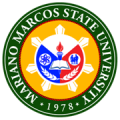
 CAFSD
CAFSD CASAT
CASAT CAS
CAS CBEA
CBEA CCIS
CCIS COE
COE CHS
CHS CIT
CIT CTE
CTE COM
COM CVM
CVM Graduate School
Graduate School
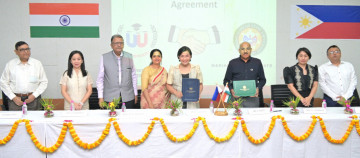
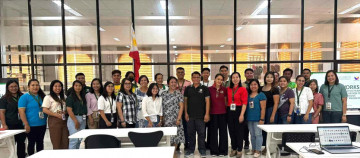
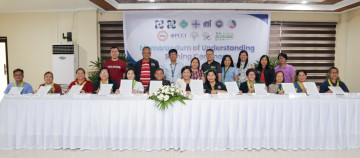
 - 2024-04-24T130321.402.png)
 - 2024-04-23T133851.401.png)